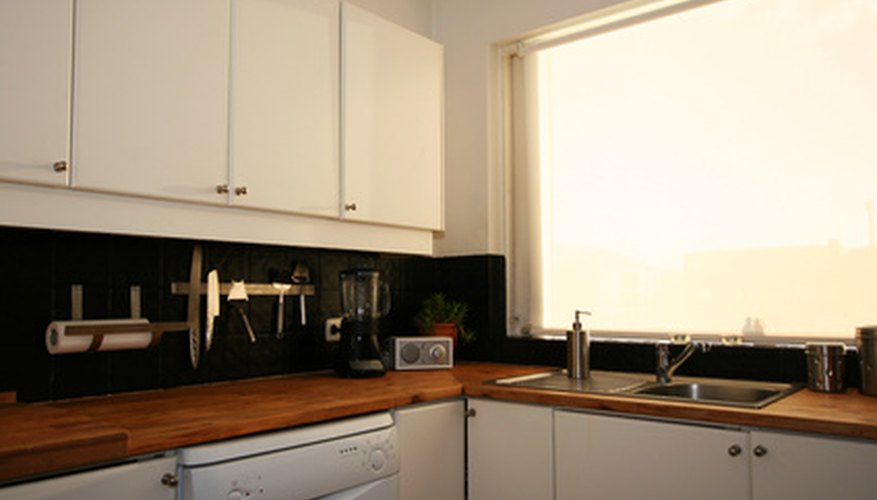Swelling in particle board kitchen cabinets occurs when moisture seeps into the board, whether because of immersion in water or extreme humidity. Different types of particle board react differently to moisture levels, depending on the type of wood used, the shape and size of the particles, the thickness of the board and the way the board was pressed. Not only does the wood itself swell, but stress is released from the press, also causing swelling. You can repair particle board kitchen cabinets, however, without having to replace an entire cabinet set.
- Swelling in particle board kitchen cabinets occurs when moisture seeps into the board, whether because of immersion in water or extreme humidity.
- You can repair particle board kitchen cabinets, however, without having to replace an entire cabinet set.
Peel away a corner of the laminate on the front of the door carefully with a small knife. If the laminate chips, you must replace it.
Pour some lacquer thinner into a spray bottle, and spray between the laminate and particle board to help separate the two.
Peel the laminate from the particle board with one hand while spraying lacquer thinner with the other. Completely remove the laminate.
Sand down the swollen board using a belt sander. Sand until the board surface is completely flat.
Vacuum the dust from the particle board. Use a tack cloth to wipe down the surface to remove any leftover dust or chips from the surface.
- Peel the laminate from the particle board with one hand while spraying lacquer thinner with the other.
- Use a tack cloth to wipe down the surface to remove any leftover dust or chips from the surface.
Apply contact adhesive to the back of the laminate and the front of the particle board. Let the glue dry.
Align the corners of the laminate to the particle board front, and roll the laminate on flat.
